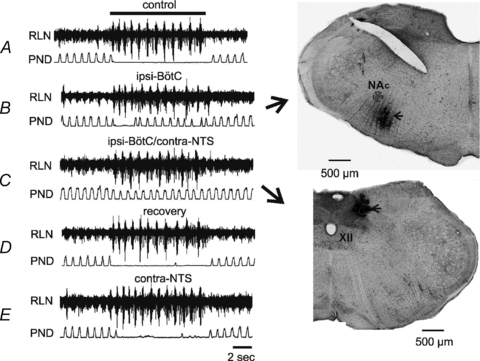Figure 7. Representative traces of the effect of microinjections of isoguvacine (10 mm, 20–40 nl) on PND and ELM burst activity monitored from the RLN during 20 Hz SLN stimulation.

A, responses of phrenic nerve and RLN to stimulation of the SLN before any microinjection. The top bar indicates duration of the SLN stimulation for each of the following traces. B, effect of a microinjection of isoguvacine into the ipsilateral Bötzinger complex (BötC). Note that the SLN induced phrenic apnoea was strongly attenuated. The injection sites were marked by pontamine sky blue (indicated by arrows) at the same time of the microinjection (B-C, NAc: compact formation of the nucleus ambiguous, XII: the hypoglossal nucleus). C, effect of a subsequent microinjection of isoguvacine into the contralateral nucleus tractus solitarii (NTS), leading to no PND absence during the SLN stimulation. In contrast, neither the BötC nor NTS microinjection has a visible effect on burst activity monitored from the RLN (B-C). D, recovery of the apnoeic response after 60 min of the NTS microinjection. E, microinjection of isoguvacine into the contralateral NTS, without the BötC microinjection, has little effect on the apnoeic response.
